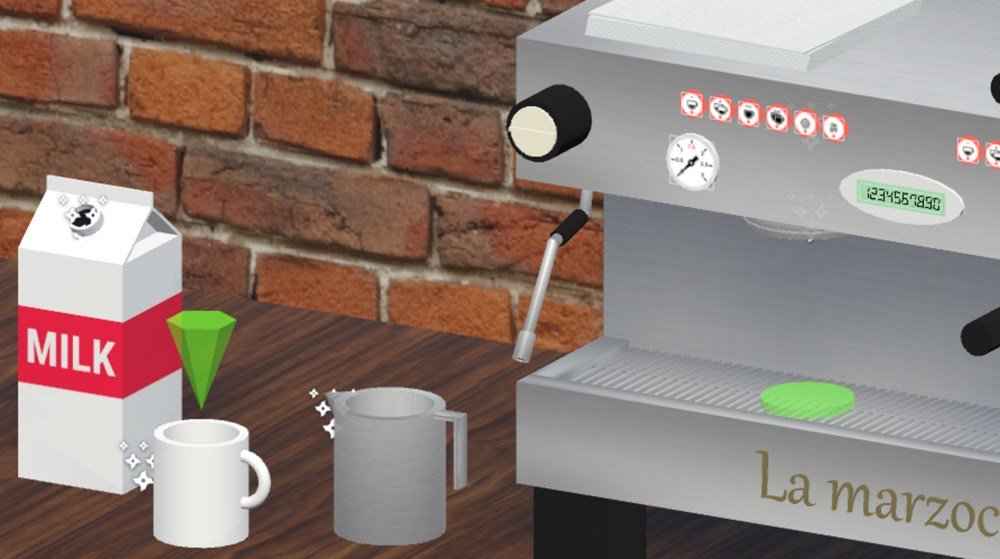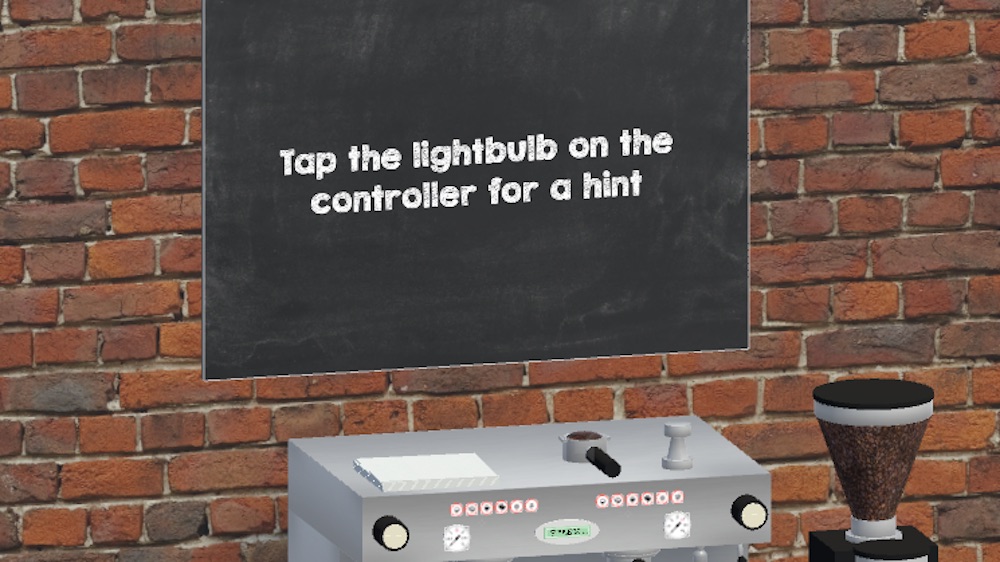Introduction to Coffee Teaching there are New ways to learn to make Coffee more efficiently through VR Teaching
For professional baristas, please follow the coffee workshop (Wechat official account cafe_style)
At a time when virtual reality applications are beginning to grow vigorously, many market views think that virtual reality can be used as a job training application for enterprise employees, so content such as "Job Simulator" has been launched one after another. In order to test whether the work training effect can be achieved through virtual reality, the Google Daydream lab team conducted an actual test to compare the training results through virtual reality or by watching YouTube films.

According to the actual test results of the Google Daydream lab team, it is shown that the overall result of training how to brew a cup of coffee through virtual reality is twice as good as learning by watching a movie. Although there are still some problems such as taste gap no matter which training method is used, it is easier for trainees to remember the overall operation process by simulating the actual operation process in virtual reality, such as filling coffee powder from a bean grinder. And brew Italian espresso through the equipment, and then add milk or dilute it into American coffee according to customer needs.

On the other hand, trainees who watch the film to learn the coffee brewing process may be more likely to have problems such as operational errors and reversal of order, and may not even be able to cope with the actual pace of ordering in the restaurant. Therefore, from the actual results, although there is no guarantee that trainees can make coffee with excellent taste through virtual reality training, there are relatively fewer errors in the process of operation. Google also confirms that the virtual reality training model is indeed useful.

However, many practical problems have been exposed in this experiment.
First of all, coffee is a bad choice. The physical sensation of grinding beans and pressing powder obviously cannot be simulated by a simple vibration buzzing sound. In addition, no matter how many times the volunteers were warned not to touch the virtual steam nozzles, they were always too close to the nozzles in the real world, so the researchers needed to prepare hands to pull their hands back at any time. This shows that for some skills, virtual reality training is not yet mature. Until the tracking performance of gloves is improved and tactile feedback becomes mainstream, VR training will still have restrictions on input, such as being able to operate only through the controller or using buttons. If there is too much distance between the digital analog object and the real object, it may not be of much help to the skill learning.
At the same time, Google has found that people don't follow instructions. This can be seen in all prototypes produced by Daydream Labs, which is a particularly big problem for trainers. Instructions located on the controller? People put their hands on both sides; write on the backboard? Their attention is focused on what is in front of them; use narration? They don't have the patience at all; Google even adds a "prompt" button, but people think it's cheating, and in any case, they always forget after a step or two. So Google finally combines all of the above methods and adds tags to the scene. Large green arrows indicate what the user should do. But Google says it has not solved the problem and that more needs to be done to integrate instructions effectively.

Therefore, Google also shows that virtual reality training may not completely replace the traditional training mode, but mainly as an option among many training contents, such as simulating the actual operation situation through virtual reality, so that trainees can learn more closely to the real situation. at the same time, it can also ensure certain risks for training units and reduce training costs. Previously, NASA and other units have used virtual reality equipment to allow astronauts to simulate the possible situation of the space station, but they do not need to spend a lot of money to build simulated space gravity environment and operation training equipment, and use computers and virtual reality to simulate the operation of related equipment, so that astronauts know and get used to all kinds of situations.
At present, more and more people are engaged in work training, psychotherapy, or situation simulation before major surgery through virtual reality, and there are even many application models that enable people to work together in virtual reality situations at the same time, or even to interact remotely, and so on. Many markets think that virtual reality will bring many application opportunities.
Important Notice :
前街咖啡 FrontStreet Coffee has moved to new addredd:
FrontStreet Coffee Address: 315,Donghua East Road,GuangZhou
Tel:020 38364473
- Prev

High rainfall leads to a decline in the production of coffee beans in Wendu Wasuo, Indonesia.
Kaiping (official Wechat account vdailycom) found that high rainfall caused coffee production in Bondowoso to fall by 40 to 60 per cent in 2017 due to the opening of a small shop in Beautiful Cafe. On July 15th, Suyitno, director of the Rejo Tani cooperative in the town of Sukosari, said coffee bean production had dropped significantly this year. Last year, the yield per hectare reached 500 kg to 600 kg.
- Next

Annual report of Honduran Coffee 2017
Highlight of the report: Honduras is the largest coffee producer in Central America and the third largest coffee producer in Latin America, ranking sixth in global coffee exports. Coffee production in Honduras from October 2017 to September 2018 is expected to reach 6.5 million bags, up 4 per cent from last year. For the 2016 / 2017 sales year, at the beginning of 2017, Loeb
Related
- Why can American refills for free? The difference between Americano and American drip pot coffee
- Being chased out of the rain in front of Starbucks?! Store: Sheltering from rain under umbrellas poses a safety hazard
- The white moonlight has changed?! Lucky launches "Big Winter Pear American"
- Hand-brewed coffee three-stage method, high-sweet and universal brewing method to share! What does the high sweet water level of hand-brewed coffee mean?
- What is the difference between raw, refined and full espresso coffee? How to extract espresso and taste good?
- A complete list of coffee bean names and their meanings! What is Yejia Shefi coffee? Where is Mantelin coffee?
- What grade does Arida Manor Kaduai coffee beans belong to? What treatment is Arida ASD slow anaerobic sun exposure?
- The milk tea cup becomes smaller?! Overlord Tea Girl launches a new "Return to Yunnan" series
- Accused of selling counterfeit and high-priced coffee beans! Well-known boutique coffee brand "Oukelao" bowed and apologized!
- How to make espresso dumplings? Can I eat coffee and glutinous rice balls together?

